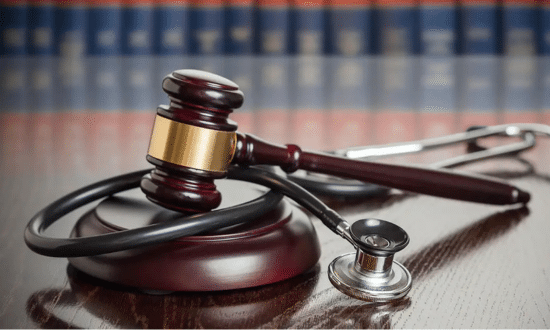
If you or a loved one has suffered due to medical negligence, it’s crucial to stay informed about New York’s changing medical malpractice laws. These updates could affect your ability to file a lawsuit, change the statute of limitations, and impact how much compensation you can recover for medical bills, lost wages, and pain and suffering.
Understanding these legal changes is vital for anyone considering a medical malpractice lawsuit in New York. Here’s what you need to know—and how these updates could impact your case.
New York previously required victims to file a medical malpractice lawsuit within 2.5 years (30 months) from the date of the malpractice incident, regardless of when the patient discovered the mistake. This meant that if a doctor’s negligence wasn’t immediately apparent, victims could lose their right to sue before even realizing the harm done.
Under Lavern’s Law, the statute of limitations for medical malpractice claims involving cancer or malignant tumors now starts when the patient discovers the malpractice, not when it actually occurred.
What You Should Do: If you recently discovered a medical error in your cancer diagnosis, you may still have time to file a lawsuit. Speak with an experienced New York medical malpractice attorney to determine your legal options.
Unlike many states that limit how much money victims can recover, New York allows full compensation for medical malpractice victims, including:
✔ Medical expenses (past and future)
✔ Lost wages and reduced earning capacity
✔ Pain and suffering
✔ Emotional distress and loss of quality of life
Lawmakers are considering placing limits on non-economic damages, which cover pain, suffering, and emotional distress. If passed, these changes could:
What This Means for You: If caps are introduced, victims may recover less compensation than they deserve. If you believe you have a case, taking legal action sooner rather than later could help you maximize your recovery before any new laws take effect.
New York’s existing regulatory framework continues to monitor doctors and healthcare facilities to ensure compliance with medical standards. The New York State Office of Professional Medical Conduct (OPMC) and the New York State Department of Health oversee physician discipline and investigate malpractice complaints. While no recent changes have significantly expanded oversight, these agencies remain responsible for enforcing professional accountability and patient safety regulations.
New York has established regulatory measures to oversee physicians and healthcare providers involved in medical malpractice. While there have been no recent legislative changes enhancing oversight, the following mechanisms remain in place:
✔ Oversight of Physicians with Multiple Malpractice Claims: The New York State Office of Professional Medical Conduct (OPMC) investigates complaints against doctors, physician assistants, and specialist assistants. However, there is no automatic increase in scrutiny based solely on multiple malpractice claims. Each case is reviewed individually based on allegations of negligence, incompetence, or professional misconduct.
✔ Medical Board Authority to Discipline Physicians: The New York State Board for Professional Medical Conduct has the power to impose disciplinary actions such as fines, license suspension or revocation, mandatory retraining, and probationary monitoring for physicians found guilty of professional misconduct. This authority has been long established and continues to be enforced.
✔ Public Access to Malpractice Records: Under New York Public Health Law Section 2995-A, physician profiles include publicly available information on malpractice settlements, awards, and disciplinary actions. This law allows patients to access a doctor’s professional history to make more informed healthcare choices.
Medical malpractice lawsuits in New York are known for their complexity and extended duration. According to the New York City Comptroller’s Annual Claims Report, these cases often take five to ten years to resolve.
Several factors contribute to these lengthy timelines:
There is ongoing talk about making policies to speed up the legal process and reduce case backlogs. However, no specific changes have been made recently in New York to speed up medical malpractice cases. As a result, the timeline for resolving such cases remains largely unchanged.
What This Means for You
Given the current landscape, it’s crucial to consult with an experienced medical malpractice attorney who can navigate the complexities of the legal system. They can help you understand the process, set realistic expectations, and work diligently to pursue the compensation you deserve.
If you or a loved one has been harmed due to a doctor’s mistake, a surgical error, or a misdiagnosis, don’t wait to take legal action.
🔹 Deadlines are changing, and your rights may be affected if you wait too long.
🔹 Medical malpractice cases require strong evidence, so gathering medical records, expert testimony, and legal documentation early is crucial.
🔹 An experienced medical malpractice lawyer can help you navigate New York’s evolving laws and fight for the maximum compensation you deserve.
Contact Salenger, Sack, Kimmel & Bavaro Today
At Salenger, Sack, Kimmel & Bavaro, our New York medical malpractice attorneys have decades of experience fighting for victims of doctor negligence, hospital errors, and misdiagnoses. We stay ahead of changing laws to ensure our clients get the strongest possible representation.
Free Consultation – No Fees Unless We Win
Call 800-675-8556 or schedule a free case evaluation today to learn how these law changes may affect your medical malpractice lawsuit.